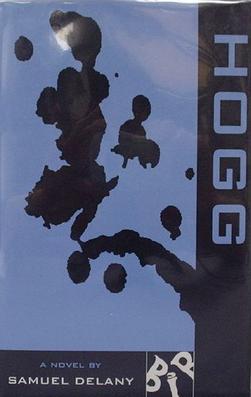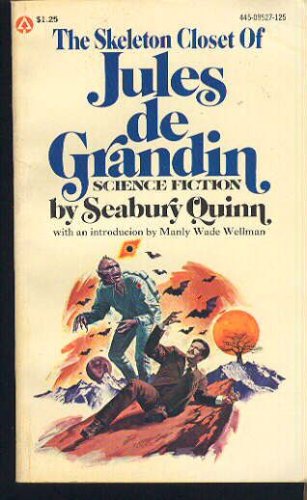
HOGG by Samuel R. Delany (1995)
It's easy to dislike this book. It is repulsive in its sexuality and casually grotesque in its violence. Worse for the casual reader, there is nothing supernatural or even physically abnormal about the denizens of Delany's world. These are simply horrific people doing horrific things.
If you have ever put aside a work by Carlton Mellick because it was too extreme, or felt that the perverse carnality of Ed Lee was over the top, you shouldn't even pick this book up. Unlike many books, this title was not banned. This is because no publishers would produce the book until Black Ice released it in 1994, more than two decades after its completion.
The main character is an eleven year old boy whose official name is never revealed throughout the story; he is the narrator, telling of events from his youth. The story splits into two halves, the first focusing on rape and the second focusing on murder. That barely skims the surface of the book's depravity. There are voyeurism, racial epithets, male-female sex, male-male sex, urolagnia, an incestuous relationship between brother and sister, sex between father and daughter, underage prostitution and gang rape in this book. That's in the thirteen page first chapter, before the narrator meets the titular Hogg and things start getting brutal.
This book was intended as a commentary on what lay just outside of the borders of our civil society in the late 1960s and early 1970s. It is excessive, sometimes annoyingly so. When Hogg gets into a discussion about his personal philosophy, I found myself wanting more just to provide an insight into the author's reasoning. Delany refuses to hand us the answers he wants us to have, though; instead he maneuvers the story into a path which illustrates the results of Hogg's philosophy and in so doing encourages the reader toward a conclusion.
This is the type of literary sleight-of-hand at which the best authors excel: guide the reader through a story toward a conclusion which the reader thinks they reached by themselves. It is indicative of Delany's skill that he manages to tell what is fundamentally an excruciatingly repetitive tale of a few days' violence in an artistic fashion.
The book embraces nightmare without condemnation or judgment, and in so doing pushes the reader toward a conscious refutation of that nightmare. Wonderfully done, and not for the easily offended.
Five stars out of five.

KEEPERS OF THE BEAST by Jack Maclane (1988)
I have a love/hate relationship with Zebra covers of the 1980s. Mostly hate. They loved their glossy black with raised lettering, they loved their skulls, their skeletons, children in peril, and holograms. What they didn't love was matching the cover to the book.
Case in point: Keepers of the Beast has a cover which shows a child trapped in a cage of giant alphabet blocks, the bars of which are arm bones. This might be appropriate for a child-in-peril novel, particularly one which involves animate, evil toys. It is not appropriate for the book, which follows a CIA assassin as he seeks revenge upon his brother's killers.
Cover aside, the book is fairly well written, and I'd likely rate it as above average but for the author. The concept is solid and obviously competent research was done for the novel (not a necessity in the horror-glutted 1980s, particularly for writers at Leisure or Zebra). We've got a bit of demonic summoning and some debased humanity as people are influenced by the demon. There are a couple of obvious problems (such as occasional ham-fisted foreshadowing, or the group of acolytes who have been warped by the demon's influence: it's a small college town in the middle of Nowhere, TX. The people here are unable and unwilling to go back into normal society, and would therefore be considered "disappearances". Between them and the human sacrifices wouldn't someone notice a sudden spike in vanishing people?) but overall the book works well.
It is, however, an early book not by Jack Maclane but by Anthony award winning mystery writer Bill Crider, working under his Maclane pseudonym. I've read enough of his other work to know how satisfying a Crider novel can be, and this one falls short of the high mark I expect of his work.
On the positive side of things, while this 1988 release isn't an easy book to find in paperback (though it also isn't expensive when you do find it) it has been recently re-released as an e-book by Crossroads Press. And the e-book has a real cover, something far more appropriate to the story.
Three stars out of five.

THE SKELETON CLOSET OF JULES DE GRANDIN by Seabury Quinn (1976)
There are other books I could have chosen from the six book series of de Grandin stories issued by Popular Library in the mid-1970s, but this one featured an affectionate recollection by Manly Wade Wellman. In it he talks of his friend both on the personal and professional level. It provides the reader with a good feeling for the author.
That's important, because Quinn is among the most maligned of the Weird Tales authors. While contemporary writers complain about Lovecraft's purple prose, they do so cautiously, very aware of the gent's large and loyal fan base and their devotion to the ideas and creatures he popularized. When they talk negatively about Robert E. Howard, they know they risk getting an earful from the people who love the energy and originality Howard brought to the pulps. When they talk smack about Quinn, they get nods of appreciation for their awareness of lesser authors.
I find this a shame. Quinn's stories, as both his fans and detractors love to point out, were consistently among the most popular in Weird Tales and typically beat Lovecraft and Howard in the fan polling. This did not happen because he was a bad writer. This happened because he was able to stir a sense of weird menace within the confines of an adventure story, and managed to avoid repeating himself despite his desire to keep most of the supernatural detective Jules de Grandin's cases within the confines of the same rural New Jersey city.
His stories are often derided as racist, repetitive, and pulpy. The racist allegation is the least appropriate; while foreigners were often the source of the troubles in the de Grandin stories, they were also often the noble victims. The use of foreign villains occurred because Quinn drew from his own experiences and research, and many of the more interesting monsters and supernatural powers originated in Europe, the Middle East and the Far East. Staying true to his research, the antagonists in his stories would originate appropriately, often alongside gentle folk of a similar persuasion whom de Grandin would be defending.
Quinn's research and his story format were the sources of repetition. It is barely noticeable in the individual Popular Library books but becomes obvious as more stories are read in succession. In the bulk of the stories, Quinn followed the format popularized by Sir Arthur Conan Doyle: a caller would request aid from de Grandin, the intrepid Frenchman would investigate, and with aid from his doctor friend they would vanquish the evil. More often than not their foe would be from Southern Europe or the East. The format was the established one for the consulting detective, and Quinn's knowledge of mythology leaned heavily upon the European and Eastern tales.
Pulpy? Yes. There is more action than characterization here. But the same holds true for most other stories from the pulps. It was what was demanded by the publishers.
If this sounds more like a defense of Quinn's famous supernatural detective than a review, I'm not disturbed. I enjoyed these stories, just as I enjoyed most of the other de Grandin works, and I wanted to explain why before I recommended them. If you want to take a walk through the world of the supernatural detective of the 1930s, it's difficult to do better than these six.
Four stars out of five.
--Bill Lindblad
